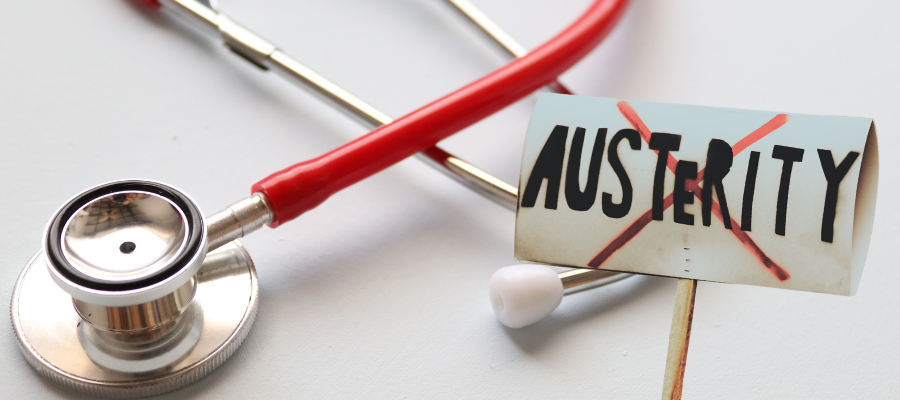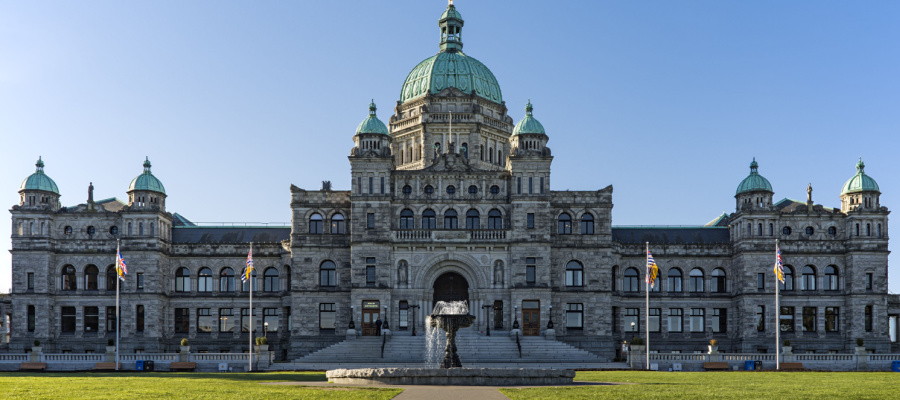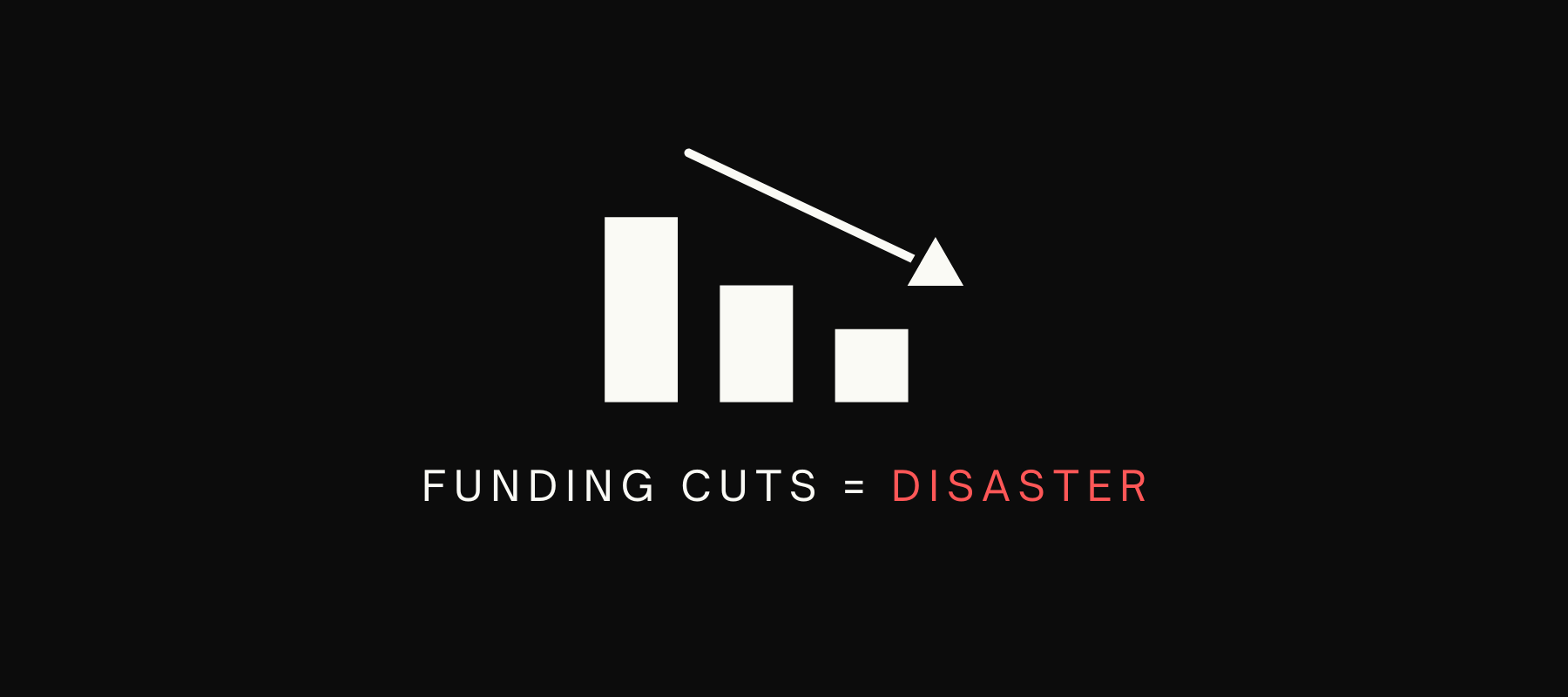Rejecting the high costs of tax cuts and austerity to our health

Twenty-three years ago, BC launched into neoliberal restructuring to cut taxes and downsize the public sector.
Today, the election debate is dominated by competing tax cut proposals that risk eroding our collective capacity to invest in one another, thereby widening health inequalities that make us sicker and will further stretch an overburdened health care system.
It is an unfortunate fact of political history that we too often forget—or deny—the consequences of past fiscal policy decisions and the impact on health and wellbeing. Let’s refresh ourselves.
In its first day in office in 2001, the newly elected BC Liberal government slashed personal income taxes by 25% and reduced corporate taxes. The massive tax cuts left a crater in BC’s treasury of $2 billion in the first year alone ($3.3 billion in today’s dollars).
Today, the election debate is dominated by competing tax cut proposals.
This self-inflicted fiscal crisis created the political context for austerity and privatization, with dire consequences.
BC developed a reputation for its poor record on poverty and inequality: every year from 2002 to 2019 BC had the highest child poverty rate in Canada. Income assistance rates were frozen for a decade.
Mass health worker firings, hospital closures and privatization translated into fewer publicly funded long-term care beds in 2016 than in 2001 relative to the growing population of seniors and among the fewest hospital beds per capita in the country. Between those same years, the BC government promised more community care, instead access to public home support fell in every part of the province.
BC’s deepening austerity in the Liberal years was felt acutely when it came to affordable housing. By 2016, there were over 3,000 unhoused people and another 145,000 households in core housing need, on the edge of homelessness.
The public education and post-secondary sectors suffered great harm: larger classrooms, fewer supports and large tuition fee increases.
Tax changes between 2001 and 2016 overwhelmingly benefitted the wealthy—and deprived the public purse of billions of dollars in revenue. BC has still not recovered from the reckless and unnecessary tax cuts and austerity that began in the early 2000s.
In 2017, important steps were taken to restore some tax fairness and reduce inequality, including the creation of two top income brackets and elimination of regressive Medical Service Plan (MSP) premiums. Still, as the Canadian Centre for Policy Alternatives found, in 2023 the richest 1% were paying an effective tax rate of 11.1%—substantially down from 14.4% in 2000.
Tax changes between 2001 and 2016 overwhelmingly benefitted the wealthy.
Together—as a health policy researcher, professor of nursing and family doctor serving low-income patients—we are deeply concerned by the BC Conservative and BC NDP tax cut proposals.
While details are sparse, the BC Conservatives’ Rustad Rebate—branded as “the largest tax cut for renters and homeowners in BC history”—offers a tax credit on 5.06% of up to $3,000 monthly in rent or mortgage interest. The party estimates this will cost the treasury $3.5 billion annually when fully implemented in 2029—larger, indeed, than the tax cuts of the Gordon Campbell Liberal government of 2001.
The BC NDP are promising voters one-time rebate cheques of $500 for single persons and $1,000 for households in the first year, which is estimated to cost $1.8 billion. In subsequent years, the annual income tax dedication is expected to cost $1.3 billion in foregone annual revenue and will be phased out at the $125,000 income level for single persons and $250,000 level for households.
And while both proposals are short on details, we do have enough information to know that these cuts will leave those at the bottom of the income distribution behind—that is, those who are disproportionately affected by the increase in the cost of living.
The Conservatives’ proposal will do nothing for renters with incomes too low to benefit from a tax credit (and renters with lower rents). The NDP tax cut increases the basic personal amount that is exempt from taxation, which will do little for folks already with the lowest (or no) taxable incomes.
A large body of evidence shows that people living in more equal societies are healthier on average. This isn’t surprising as poverty is, by far, the most important contributing factor to poor health and premature mortality. For this reason, reducing social inequalities can lead to significant improvements in population health outcomes, potentially more than offsetting the cost of such policies. This could provide more fiscal room for important investments like voluntary substance use treatment services or establishing community health centres in every community.
A large body of evidence shows that people living in more equal societies are healthier on average.
The BC Health Officers Council estimated that 20% of provincial health care spending is attributed to health inequalities, which these tax cuts are likely to worsen. Based on provincial health care spending in 2023-2024 ($34.9 billion), an estimated $7 billion in health care costs are potentially avoidable.
But in order to realize these savings, poor health associated with poverty should be reduced significantly.
These tax cuts benefit those with higher-incomes, fail to address deep poverty and will erode our fiscal capacity to provide the quality public services upon which we all depend.
Rather than return to the neoliberal epidemic of tax cuts and a fraying social fabric—we urge BC parties and voters to reject race-to-the-bottom politics that undermine our collective capacity to improve health and equality.
Topics: Election commentary, Health care


